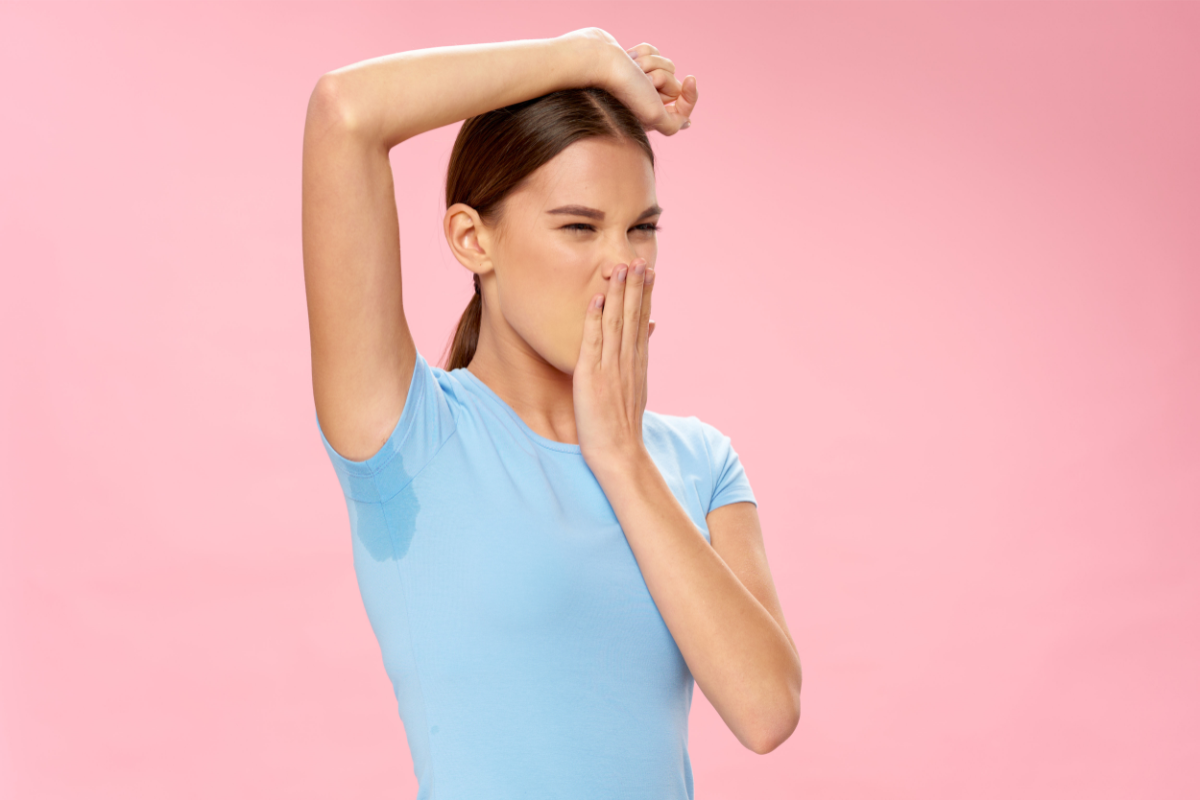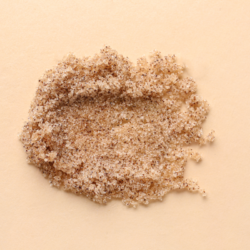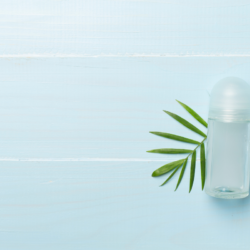Excessive sweating, or hyperhidrosis, affects many people, causing not only physical discomfort but also body odour problems that can prove embarrassing in everyday life. This article focuses on natural solutions and a lesser-known but effective alternative: the use of benzoyl peroxide.
What causes excessive sweating?
Hyperhidrosis, commonly referred to as excessive sweating, is a condition that manifests itself as an abnormally high production of sweat, in excess of what is needed to regulate body temperature. The causes of this phenomenon can be varied and are generally classified into two categories: primary and secondary.
What causes hyperhidrosis?
In the case of primary hyperhidrosis, the overproduction of sweat is often localised in specific areas such as the hands, feet, face and armpits. This form of excessive sweating is generally idiopathic, meaning that no specific medical cause is identified. It is often attributed to hyperactivity of the sweat glands and may have a genetic component, affecting several members of the same family.
Secondary hyperhidrosis, on the other hand, is often the result of underlying medical conditions or the use of certain medications. Diseases that can induce excessive sweating include, but are not limited to, endocrine disorders such as hyperthyroidism, diabetes or hormonal imbalances. Conditions such as obesity, infections and certain cancers can also cause this symptom.
The psychological and social impact of excessive sweating
The impact of hyperhidrosis often goes beyond the physical to profoundly affect the psychological and social aspects of people’s lives. The day-to-day management of this condition can lead to significant anxiety, lowered self-esteem and, in some cases, social isolation.
People with hyperhidrosis may feel self-conscious about their appearance, especially when sweat seeps through clothing or when clammy hands interfere with social interactions such as shaking hands. This embarrassment may lead them to avoid social situations, professional meetings or events where their condition could be exposed or judged.
In addition, anxiety about the possibility of sweating can itself exacerbate the condition, creating a vicious circle where the anticipation of sweating causes even more sweating. This constant emotional stress can contribute to the development or aggravation of anxiety and depressive disorders.
Benzoyl peroxide: an overview
Benzoyl peroxide is an organic compound belonging to the aromatic peroxide family, with the chemical formula This compound usually comes in the form of white crystals or powder and is notable for its powerful oxidising properties.
What is the benzoyl peroxide in Curaspot used for?
The chemical structure of benzoyl peroxide comprises two benzoyl groups linked by a peroxide group. This configuration gives it a unique ability to release oxygen when it breaks down, a process which plays a crucial role in its dermatological applications. This release of oxygen enables bacteria to be targeted and destroyed by oxidising bacterial cell membranes.
What’s more, benzoyl peroxide is lipophilic, which means it can easily penetrate the skin’s pores, where it exerts its antibacterial and keratolytic effect, helping to break down comedones (blackheads and whiteheads).
When should benzoyl peroxide be used?
Benzoyl peroxide is widely recognised and used in dermatology, mainly for the treatment of acne vulgaris. Its antibacterial properties effectively target Propionibacterium acnes, a bacterium involved in the development of acne. Through its oxidising action, it reduces the concentration of bacteria on the skin, thereby reducing inflammation and the formation of new acne lesions.
In addition to its use in the treatment of acne, benzoyl peroxide is also used for its keratolytic effects, helping to eliminate dead skin cells and prevent clogged pores, a major contributory factor to acne eruptions.
It is also being explored for its potential in the treatment of other skin conditions such as seborrhoeic dermatitis and folliculitis, although its main use remains the treatment of acne.
What should I do about excessive perspiration accompanied by unpleasant odours?
Benzoyl peroxide is best known for its use in the treatment of acne, but its antimicrobial properties also make it effective against unpleasant body odour. These odours are often caused by the bacterial decomposition of sweat, particularly in areas such as the armpits, where there is a high concentration of apocrine glands.
Benzoyl peroxide’s mechanism of action is based on its ability to release oxygen as it decomposes. This release of oxygen creates a hostile environment for many types of bacteria, including anaerobic bacteria that thrive in oxygen-free environments and are often responsible for unpleasant body odours. By disrupting the cell membranes of bacteria through oxidation, benzoyl peroxide causes their destruction, significantly reducing their ability to cause odour.
Effective in reducing odour
The effectiveness of benzoyl peroxide in reducing unpleasant body odours is supported by several studies. Thanks to its powerful antibacterial action, this compound helps to reduce the bacterial population on the skin, thereby reducing the amount of decomposed sweat that generates odours. This process is not only beneficial for limiting odours, but also contributes to better overall skin hygiene.
How can benzoyl peroxide be used to eliminate unpleasant odours?
To use benzoyl peroxide to combat unpleasant body odour, here are a few practical tips based on the recommendations of Dr Zeena Y Nawas:
- Choice of product: Benzoyl peroxide is available in several forms, including facial cleansers, gels and lotions. For sensitive areas such as underarms, which are often affected by unpleasant odours, benzoyl peroxide-based facial cleansers or gel rinses are commonly used.
- Application: Apply the product to clean, dry areas where unpleasant odours are a problem, such as underarms. Leave the product to work for a few minutes before rinsing. This allows the benzoyl peroxide to work effectively against odour-causing bacteria.
- Frequency of use: Start by using the product once a day and adjust the frequency according to your skin’s reaction and perceived effectiveness. If your skin becomes dry or irritated, reduce use to a few times a week.
- Precautions: Although benzoyl peroxide is generally safe for many users, it can cause dryness, irritation, redness and flaking, especially at higher concentrations. It is advisable to start with a low concentration and gradually increase if the skin tolerates it well.
These recommendations take advantage of the bactericidal properties of benzoyl peroxide, which oxidises and damages the cell walls of bacteria present on the skin, thus reducing body odour without stopping perspiration.
How can I get rid of unpleasant body odour?
Although benzoyl peroxide is widely used to treat skin problems associated with bacteria and odour, other medicinal options may be considered depending on the specific needs and sensitivity of each individual. Among these alternatives, topical antibiotics, such as clindamycin or erythromycin, are often prescribed for their effectiveness against acne-causing bacteria and potentially body odour by reducing the bacterial population on the skin.
Topical retinoids, such as tretinoin, are used to regulate the shedding of skin cells and can reduce the likelihood of blocked pores, which also helps to control bacteria and odour. These treatments are generally recommended for their impact on skin texture and acne reduction, but can also have an indirect effect on odour by improving overall skin health.
Natural solutions for smelling good ‘under your arms
When it comes to managing body odour, adopting natural solutions backed by scientific evidence can be as effective as they are environmentally friendly and healthy. Here are some proven natural interventions and lifestyle changes that can help significantly reduce body odour.
Effective natural remedies to prevent unpleasant body odour
- Baking sod a: Baking soda is renowned for its odour-neutralising properties. It works by absorbing excess moisture and creating an alkaline environment that is less conducive to bacterial proliferation. Direct application to clean, dry areas can help control odours without blocking natural perspiration.
- Tea tree essential oil: This essential oil is valued for its powerful antibacterial properties, confirmed by numerous studies. It is effective against many of the bacteria responsible for unpleasant body odour. For safe use, we recommend diluting it in a carrier oil, such as coconut oil or almond oil, before applying to the skin to avoid any irritation.
- Cider vinegar: Cider vinegar can be used as a natural skin tonic thanks to its antibacterial and antifungal properties. Applying a diluted solution to the affected areas can help adjust the skin’s pH, inhibiting the bacterial growth responsible for odour.
Lifestyle changes
- Personal hygiene: Maintaining a regular hygiene routine is essential for controlling body odour. This includes daily showers, the use of mild soaps and regular changes of clothing, particularly after sweat-inducing activities.
- Choice of clothing: Wearing clothes made from natural fibres such as cotton, linen or wool, which allow better air circulation and absorb moisture, can significantly reduce odour formation. Synthetic fabrics, on the other hand, can retain sweat and encourage more active bacterial growth.
- Diet: Certain foods can influence body odour. Reducing consumption of odour-intensive foods such as garlic, onions and spices, as well as red meat, can be beneficial. Increasing consumption of fresh fruit and vegetables, rich in antioxidants and water, can help purify the body and reduce unpleasant odours.
By incorporating these natural solutions and behavioural changes into your daily routine, you can effectively reduce body odour while promoting a healthy and sustainable lifestyle. These methods offer an alternative or complement to drug treatments, often with fewer side effects and fewer risks to overall health.
Sources
- A Study of Efficacy of Benzoyl Peroxide Regimens in Treatment of Unpleasant Foot Odor Last Update Posted: September 15, 2022
- Pee-ew: Getting rid of body odor with benzoyl peroxideAugust 30, 2023
- Int J Womens Dermatol. 2023 Mar; Deodorant/antiperspirant use and hair removal practices for hidradenitis suppurativa: recommendations from a single-center survey





